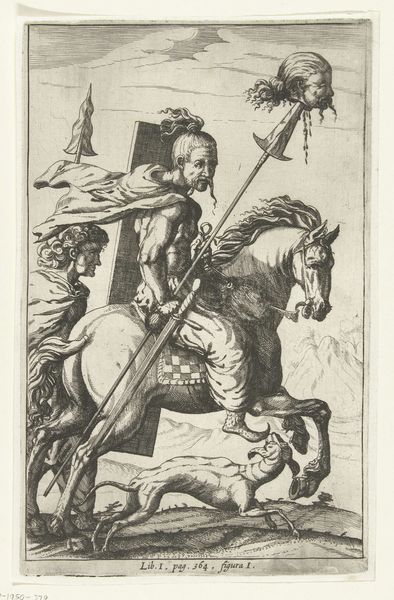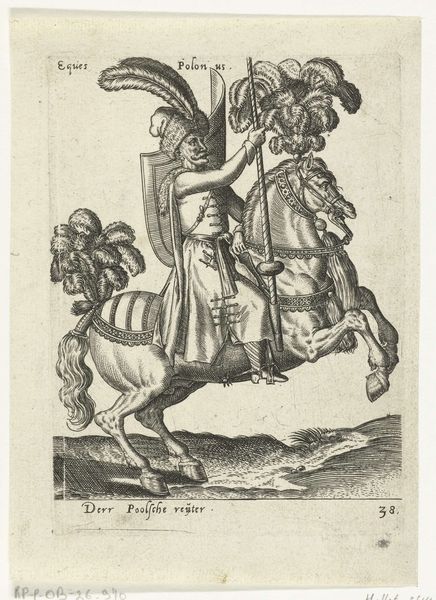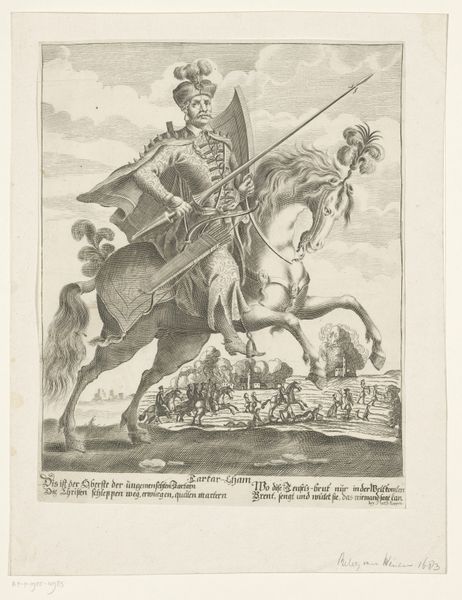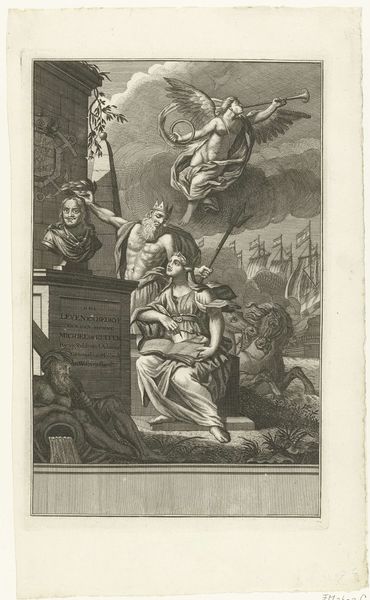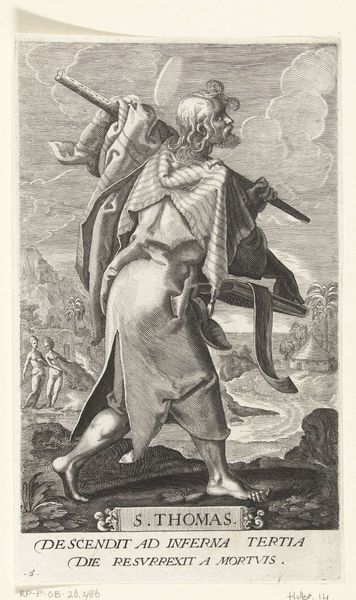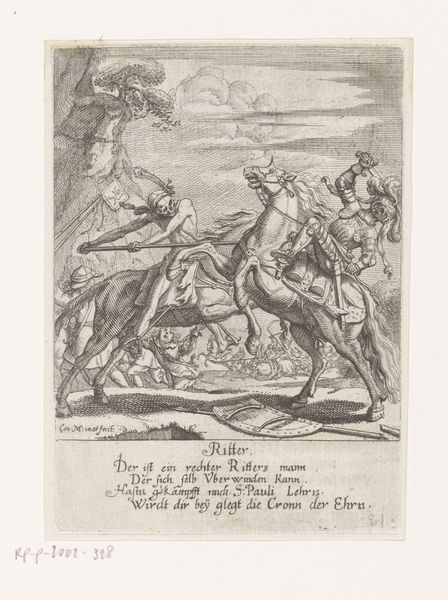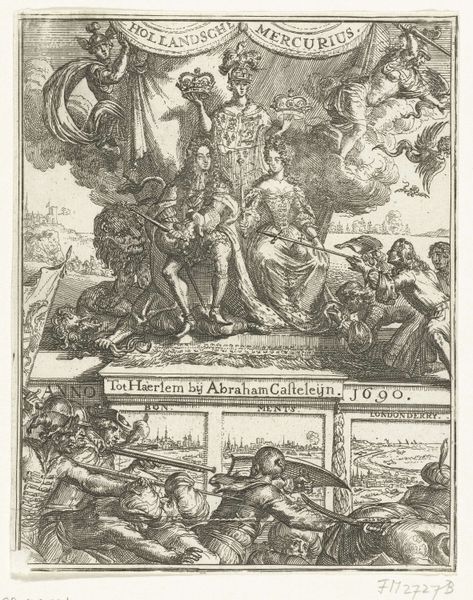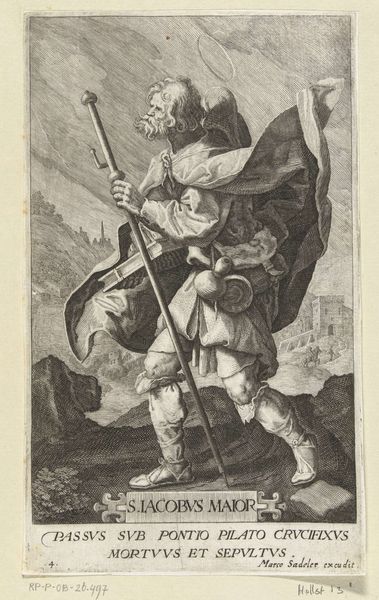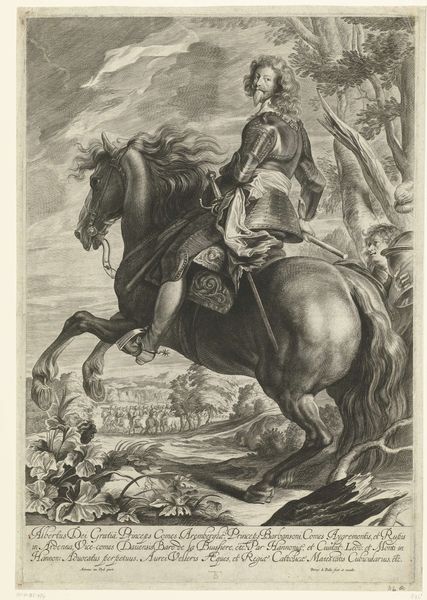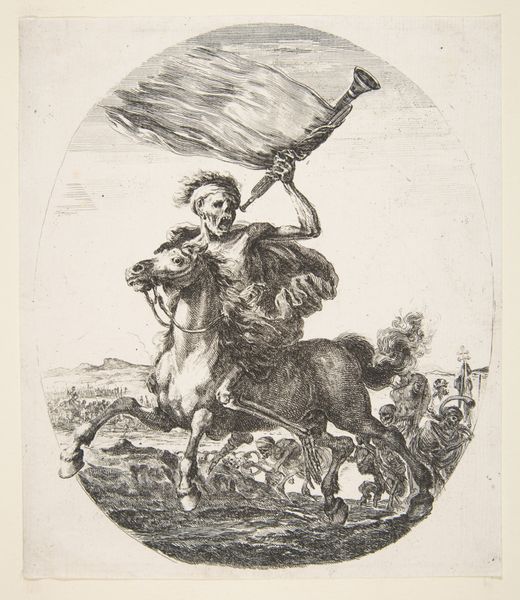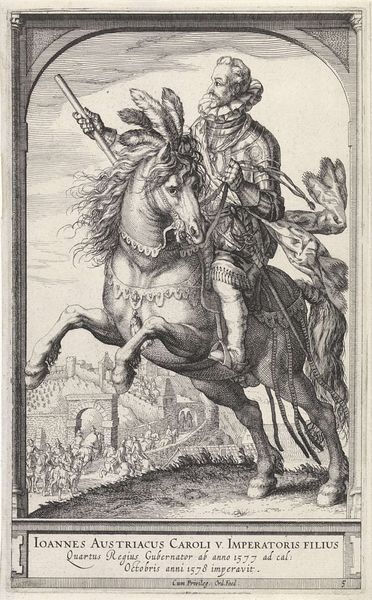
print, engraving
#
pencil drawn
#
baroque
# print
#
caricature
#
pencil sketch
#
pencil drawing
#
pen-ink sketch
#
history-painting
#
engraving
Dimensions: height 201 mm, width 154 mm
Copyright: Rijks Museum: Open Domain
Editor: This engraving from 1706, titled "Spotprent op de keurvorst van Beieren," is attributed to an anonymous artist. It’s quite a striking image—a caricature really, poking fun at someone. I’m curious about the context. What do you see in this piece? Curator: This print is dripping with political satire. Understanding the historical moment—the War of the Spanish Succession—is crucial. We see the Elector of Bavaria, Maximillian II Emanuel, depicted not as a heroic leader, but as a figure of ridicule. Notice the shield emblazoned with frogs and the donkey he rides, symbols subverting his authority. How might this image challenge notions of power and leadership in its time? Editor: So it’s directly undermining his power by using these symbols. It is interesting the frogs on the shield and his less than gallant steed... But where would people see it? How effective would that actually be? Curator: Precisely. Consider this image’s circulation and reception. Prints like these, readily reproduced and distributed, served as potent propaganda tools. They fueled public opinion, mocked the powerful, and helped shape political discourse. Think about the power of satire in today's media—how artists use similar visual strategies to critique figures of authority. In what ways does this 18th-century print resonate with contemporary forms of protest? Editor: I hadn’t thought about the distribution of prints in that way before, and its surprising how modern the motivations behind it were! It’s definitely changed my perspective. Thank you! Curator: It's all about understanding how visual culture functions as a form of social commentary and intervention. Considering these prints allows us a window into the politics of the time.
Comments
No comments
Be the first to comment and join the conversation on the ultimate creative platform.
